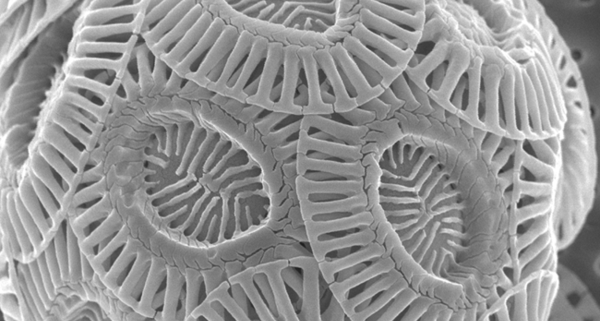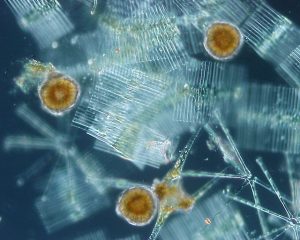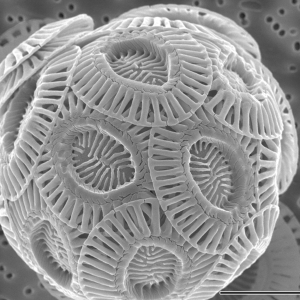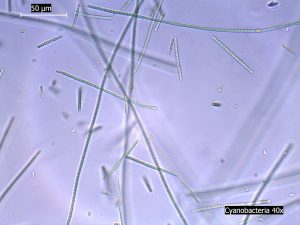Phytoplankton: Small Organisms with a Massive Impact
by Heather Alberro, RJD Intern
Phytoplankton, microscopic marine photosynthetic organisms, have a vastly significant role to play not only in the marine food web of which they’re part of, but also on a more global scale. Despite their infinitely small size in comparison to other marine organisms, these tiny creatures occupy an immensely important ecological niche: they are the foundation of the marine food web, and as primary producers, play key roles in supporting all other organisms in the marine environment, as well as in the regulation of the Earth’s climate through the sequestration of carbon, oxygen production, and other related processes. Phytoplankton account for roughly half of all global primary productivity; therefore, their significance extends far beyond the marine environment alone. There is an intriguing sense of irony in the realization that these tiny living beings that often live out their existence unnoticed and undetected by the rest of the world, have such a far-reaching impact on the lives of virtually all other living organisms on the planet, particularly on those in the marine environment. The world that we have become accustomed to has been and is continuously shaped by the workings of these miniscule yet vital “plants of the sea”.
The name “phytoplankton” can be divided into two meanings, “phyto” being the Greek word for “plant”, and “plankton” meaning “to wander or drift”; thus, phytoplankton are microscopic “drifting” plants that live in aquatic environments, and are not restricted to the oceans. However, phytoplankton are not merely one homogenous group of organisms, they represent a rich diversity of shapes, colors, and varieties, ranging from single-celled photosynthetic bacteria such as cyanobacteria, to plant-like diatoms and armor-plated cocolithophores[1]. As the aquatic counterparts to plants on land, the terrestrial primary producers, phytoplankton contain a green pigment known as chlorophyll, which captures sunlight and then, through the photosynthetic process, transforms it into chemical energy. Sunlight is crucial for phytoplankton productivity, as is the case for terrestrial plants. This photosynthetic ability is characteristic to all phytoplankton, and it is through this ability that they perform the crucial functions of absorbing carbon dioxide and releasing oxygen, processes that are essential for the continuation of life.
Cyanobacteria warrant a closer look, as they are by far the most ubiquitous and ancient group of phytoplankton on our planet, a point on which Paul Falkowski et al dwell in their article, Phytoplankton and Their Role in Primary, New, and Export Production. Cyanobacteria, also known as “blue-green algae” due to their color, are a class of prokaryotic[2] phytoplankton that evolved over 2.8 billion years ago, playing an essential role in shaping the Earth’s carbon, oxygen, and nitrogen cycles over sweeping expanses of time[3], and leading to the biogeochemical conditions of the present. In light of the vast numbers of cyanobacteria currently present in the biosphere, Falkowski et al note, “There are approximately ,10-24. cyanobacterial cells in the oceans”, a number that exceeds “all the stars in the sky”. These organisms are all-important and ever-present, yet remain virtually imperceptible to all other living beings.
The photosynthetic abilities of phytoplankton play a key role in the regulation of the Earth’s climate, largely through their impact on the carbon cycle. Just like terrestrial plants, phytoplankton, through the photosynthetic process, consume vast quantities of carbon dioxide. This carbon dioxide is stored within the phytoplankton. When phytoplankton are preyed upon by other organisms, some of the carbon makes its way back to near-surface waters, and some travels to the ocean depths. According to Rebecca Lindsey and Michon Scott’s article, What are Phytoplankton?, this ““biological carbon pump” transfers about 10 gigatonnes of carbon from the atmosphere to the deep ocean each year. Even small changes in the growth of phytoplankton may affect atmospheric carbon dioxide concentrations, which would feed back to global surface temperatures.” These miniscule beings, through a series of chemical processes, regulate key global activities in the biosphere such as the climate system, which affect all other living organisms in marine and terrestrial ecosystems alike.
In The Functioning of Marine Ecosystems, Philippe Curry et al shed light on the significance of phytoplankton in the overall functioning of the marine food web, and how phytoplankton exert a sort of “bottom-up” control on the food web’s various components. As primary producers who provide some of the basic elements essential to life, such as oxygen, phytoplankton essentially regulate food web dynamics, as they form the very basis of its existence. Phytoplankton, the “plants of the sea”, form the foundation of the marine food web, supporting successive trophic levels such as zooplankton[4], organisms that feed on zooplankton such as fish, and then predators that feed on the fish such as seals, sea lions, sharks, and marine mammals. Therefore, even organisms at the very top of the food web, including apex predators such as sharks and orcas, ultimately depend on the ecological base that is formed by phytoplankton. Declines in phytoplankton populations, apart from its effects on the Earth’s climate, can result in subsequent dwindling zooplankton populations, which in turn affect secondary and tertiary-level consumers such as fish and sharks.
Phytoplankton, as photosynthetic primary producers, not only form the ecological foundation of aquatic environments, but also serve as key drivers of the Earth’s carbon and oxygen cycles. These vital ecosystem functions are crucial to life on Earth for all living organisms. It is rather remarkable that such infinitesimal creatures have played, and continue to play, such principal roles in shaping the Earth’s biogeochemical composition. Phytoplankton are the source of crucial processes such as photosynthesis which provide the elements necessary for nearly all other organisms to survive. As Science Daily illustrates, “Phytoplankton is the fuel on which marine ecosystems run. A decline of phytoplankton affects everything up the food chain, including humans.” Even the largest being in existence, and to have ever existed, the blue whale, ultimately relies on a viable population of phytoplankton in order to sustain itself. The very small in many ways control and support the very large.
REFERENCES
Falkowski, Paul G., et al. “Phytoplankton and their role in primary, new, and export production.” Ocean biogeochemistry. Springer Berlin Heidelberg, 2003. 99-121.
Lindsey, Rebecca, M. Scott, and R. Simmon. “What are phytoplankton.” NASA’s Earth Observatory. Available on http://earthobservatory. nasa. gov/Librar y/phytoplankton (2010).
Cury, Philippe, Lynne Shannon, and Yunne-Jai Shin. “The functioning of marine ecosystems: a fisheries perspective.” Responsible fisheries in the marine ecosystem (2003): 103-123.
Dalhousie University. “Marine phytoplankton declining: Striking global changes at the base of the marine food web linked to rising ocean temperatures.” ScienceDaily, 28 Jul. 2010. Web. 31 Oct. 2013.







Leave a Reply
Want to join the discussion?Feel free to contribute!